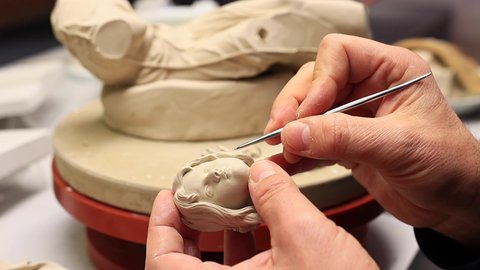MeissenLab #4: Artists
As well as upholding traditions, high priority was given to emerging contemporary artistic trends, which are the focus of Part 4 of our MeissenLab. Workers from the manufactory, many selected from among the existing staff, studied at established GDR art academies with the aim of creating artistically sophisticated porcelain both for domestic sale and for export.

MeissenLabs #3: Trade
Part 3 of MeissenLab is about trade with countries outside the socialist bloc. The most important sales market was West Germany. In the 1980s, Japan also rose to a prominent position, with the GDR maintaining close diplomatic and economic ties.
![[Translate to English:]](/fileadmin/_processed_/e/8/csm_Meissenlabs_-Making_of.mp4-00005_b5c831a2cf.jpg)
MeissenLabs #2: Corporate culture & production
Part 2 of MeissenLab examines corporate culture and production at the Meissen manufactory in GDR times. Tradition is key here; some Meissen families can trace their employment at the “Manu” as far back as the 18th century.

MeissenLabs #1: Making-of
For East Germany, Meissen Porcelain Manufactory was a prestigious, showcase company of worldwide repute and an important source of foreign currency earnings. As part of today’s “Kontrapunkte” (Counterpoints) project, members of the SKD’s FUTUR III youth advisory board talked to people who experienced the GDR era first-hand, at the spot where it all happened: the Meissen manufactory’s ceramic moulds depot.
